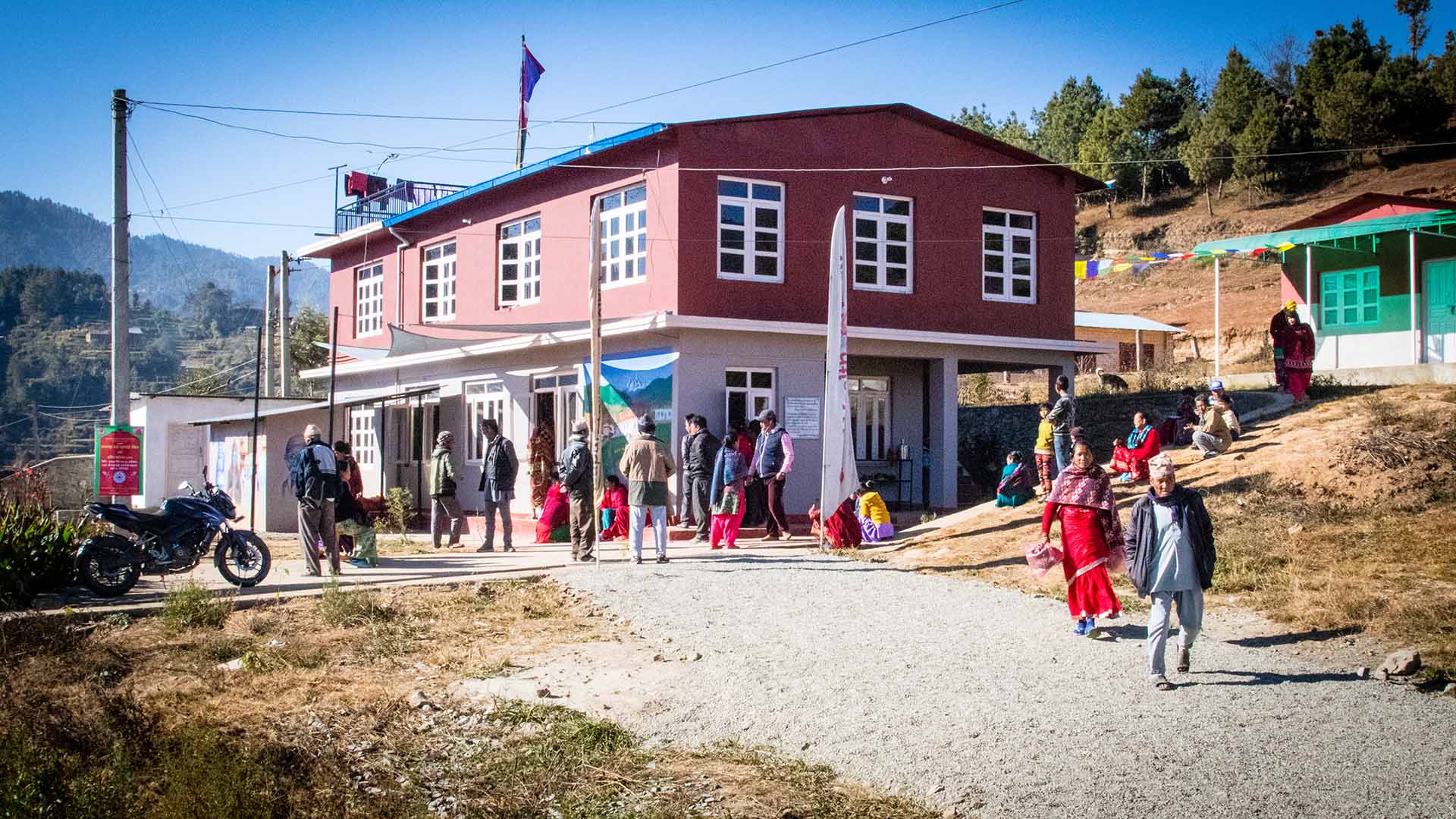News Blog
Latest News From Our Volunteers in Nepal
VOLUNTEER COMMUNITY CARE CLINICS IN NEPAL
Nepal remains one of the poorest countries in the world and has been plagued with political unrest and military conflict for the past decade. In 2015, a pair of major earthquakes devastated this small and fragile country.
Since 2008, the Acupuncture Relief Project has provided over 300,000 treatments to patients living in rural villages outside of Kathmandu Nepal. Our efforts include the treatment of patients living without access to modern medical care as well as people suffering from extreme poverty, substance abuse and social disfranchisement.
Common conditions include musculoskeletal pain, digestive pain, hypertension, diabetes, stroke rehabilitation, uterine prolapse, asthma, and recovery from tuberculosis treatment, typhoid fever, and surgery.
FEATURED CASE STUDIES
Rheumatoid Arthritis +
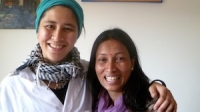
35-year-old female presents with multiple bilateral joint pain beginning 18 months previously and had received a diagnosis of…
Autism Spectrum Disorder +
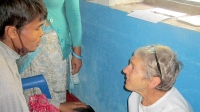
20-year-old male patient presents with decreased mental capacity, which his mother states has been present since birth. He…
Spinal Trauma Sequelae with Osteoarthritis of Right Knee +
60-year-old female presents with spinal trauma sequela consisting of constant mid- to high grade pain and restricted flexion…
Chronic Vomiting +
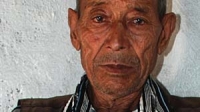
80-year-old male presents with vomiting 20 minutes after each meal for 2 years. At the time of initial…
COMPASSION CONNECT : DOCUMENTARY SERIES
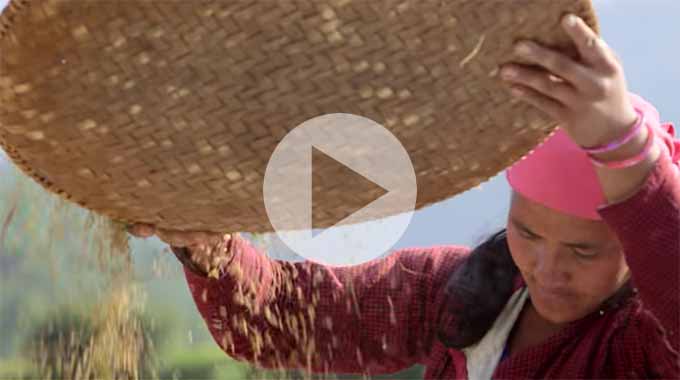
Episode 1
Rural Primary Care
In the aftermath of the 2015 Gorkha Earthquake, this episode explores the challenges of providing basic medical access for people living in rural areas.
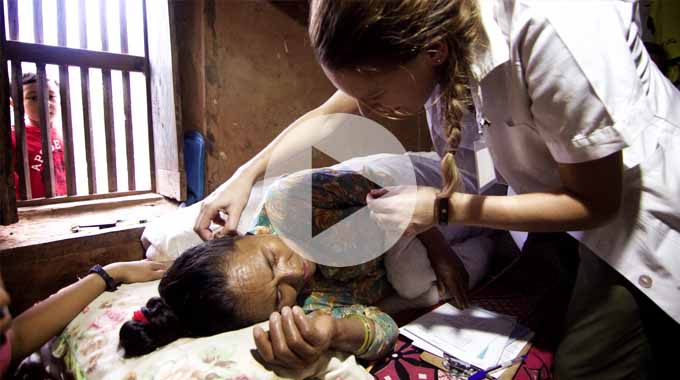
Episode 2
Integrated Medicine
Acupuncture Relief Project tackles complicated medical cases through accurate assessment and the cooperation of both governmental and non-governmental agencies.
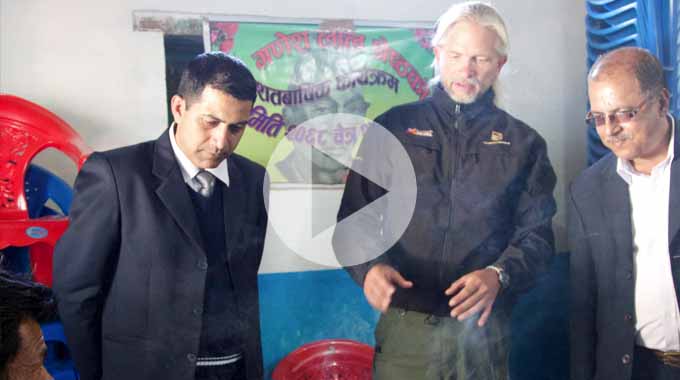
Episode 3
Working With The Government
Cooperation with the local government yields a unique opportunities to establish a new integrated medicine outpost in Bajra Barahi, Makawanpur, Nepal.
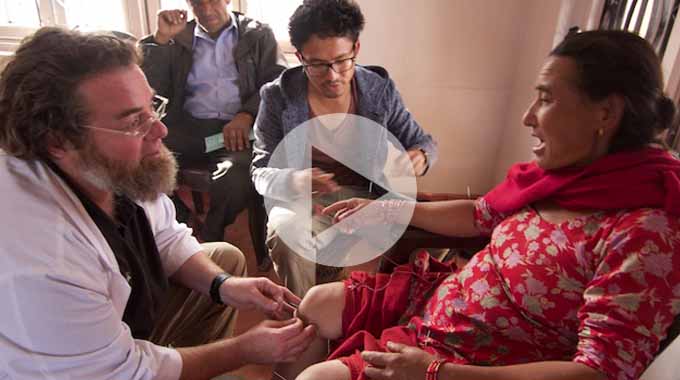
Episode 4
Case Management
Complicated medical cases require extraordinary effort. This episode follows 4-year-old Sushmita in her battle with tuberculosis.
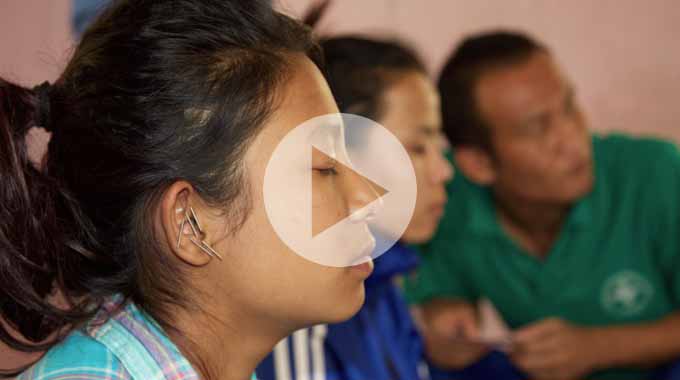
Episode 5
Sober Recovery
Drug and alcohol abuse is a constant issue in both rural and urban areas of Nepal. Local customs and few treatment facilities prove difficult obstacles.
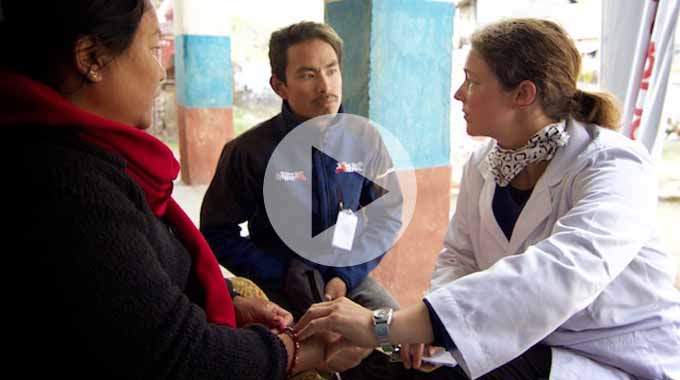
Episode 6
The Interpreters
Interpreters help make a critical connection between patients and practitioners. This episode explores the people that make our medicine possible and what it takes to do the job.
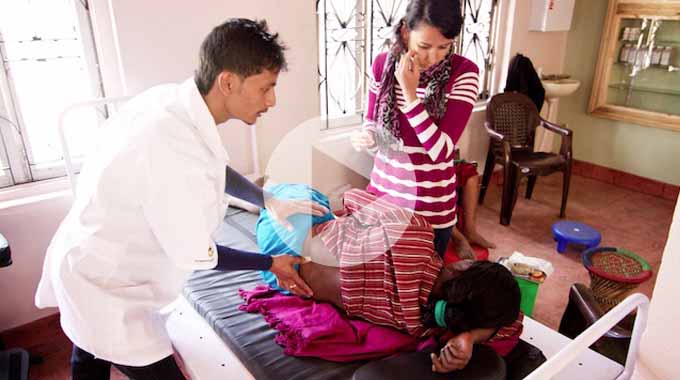
Episode 7
Future Doctors of Nepal
This episode looks at the people and the process of creating a new generation of Nepali rural health providers.
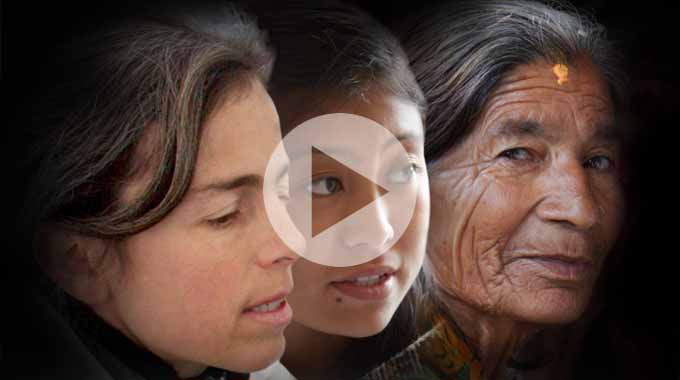
Compassion Connects
2012 Pilot Episode
In this 2011, documentary, Film-maker Tristan Stoch successfully illustrates many of the complexities of providing primary medical care in a third world environment.
From Our Blog
- Details
- By Chad Wuest
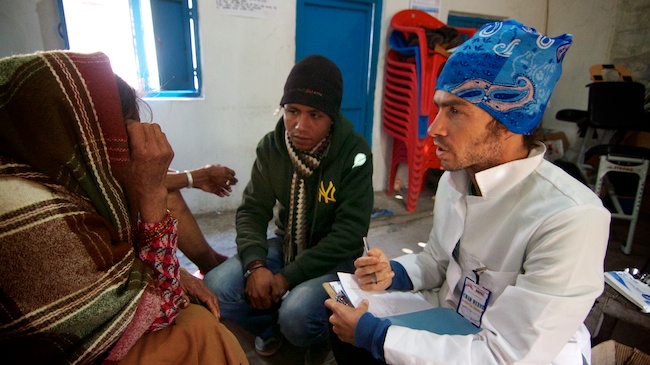
After a few days exploring Kathmandu, just the day before heading to Bhimphedi, we had our first serious meeting. I think this is where the reality of everything really hit home for me. The next day we would be heading to our home base to start the camp and I knew that it was “business time” and that things would get really interesting.
The first week I felt like a deer in the headlights. The culture, meeting our new family of interpreters/hosts, training, and getting to know the procedures and practical aspects of working in the clinic, combined with the volume of patients, was totally overwhelming! But the ability to deal with it and push forward with a positive attitude grew stronger and stronger. Now, going into the 4th week and looking back, I can say this has been one of the best experiences of my life. The experience keeps challenging me and changing me, and in turn the experience becomes even more amazing.
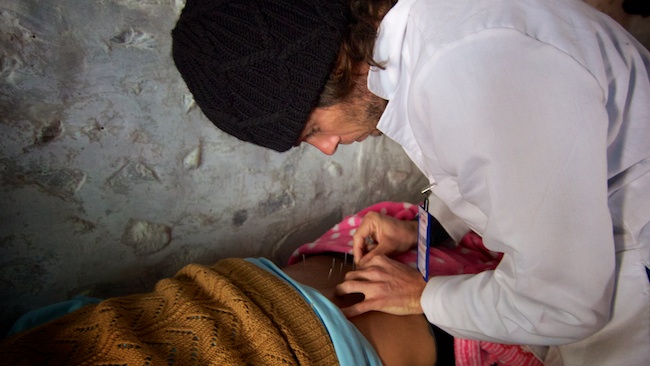
The speed needed to treat the amount of patients that arrive each day without compromising efficacy has been a steep learning curve for me. And the label of “Dr” comes with the perception that we can bring a magical cure to all diseases. Although the acupuncture and the primary health care we are providing here is extremely beneficial, I am beginning to witness firsthand what does and does not work for many different conditions.
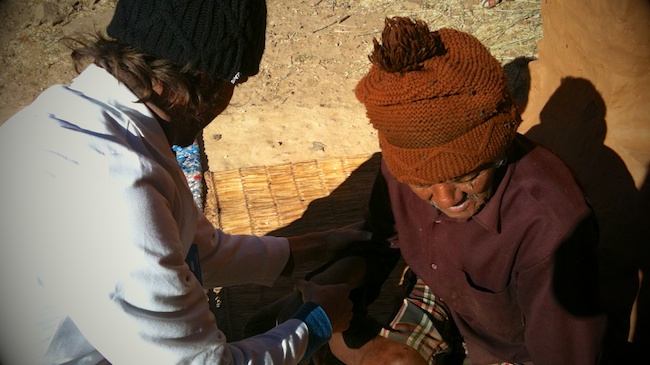
One example is the many presentations of ear infections that walk through the door - acute, chronic, perforated ear drums, young children, seniors, etc. Given the danger of complications and progression of an ear infection - risking permanent hearing loss or encephalitis - when western medicine is somewhat available, seems risky. Here we are personally faced with the responsibility of caring for these patients. I become aware that an ego-centric belief of my skills should not override my medical judgement. Working with ARP is teaching me to refer out if we don’t have the correct medicine, knowledge or skill, but to still practice good patient care. This awareness of a broader medical picture, in practice with acupuncture, moxibustion, Chinese herbs and primary health care, provides a complimentary system that benefits the community here in so many ways.
Lacking the linguistic skills to communicative effectively has been another barrier. For me a huge part of this project is the interpreters. The relationships between each and every one of the practitioners and the local interpreters are vital. All the interpreters carry with them a very proactive and positive attitude and this project would simply be ineffective without them. At times it feels as though we - interpreter and practitioner- are one person treating the patient, where our communication and action come together so instinctively.
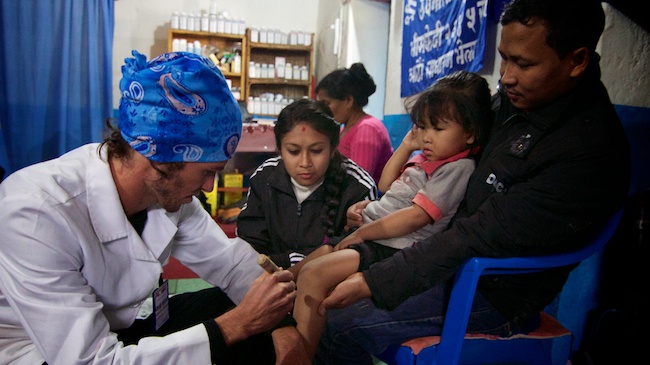
The experience here with ARP has been extremely rewarding. The challenges I face here have served to provide answers to ways in which I can better myself and increase my knowledge. My acupuncture amigos, ARP, and the interpreters are all such a dedicated bunch of people to share the journey with and I feel like we are all gaining invaluable knowledge in medicine and primary health care. I’m appreciating every bit of time I’ve had so far in Bhimphedi, Nepal.
Namaste, Dr. Chad
- Details
- By Phonexay Simon
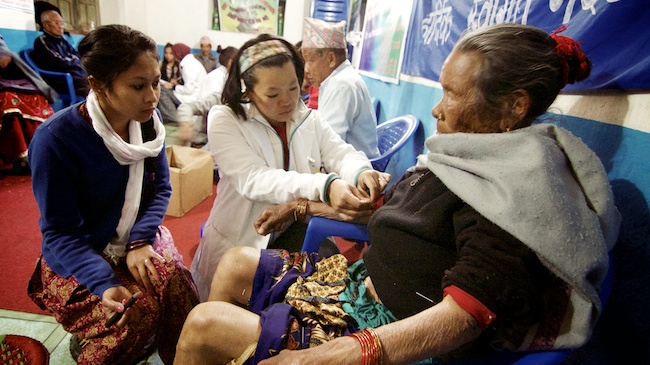
I don't really know what to write about as far as my experience in Bhimphedi, Nepal goes. There are no dramatic events that stick out in my mind. All I know is that it is one of the most wonderful experiences of my life, composed of small, subtle and beautiful moments.
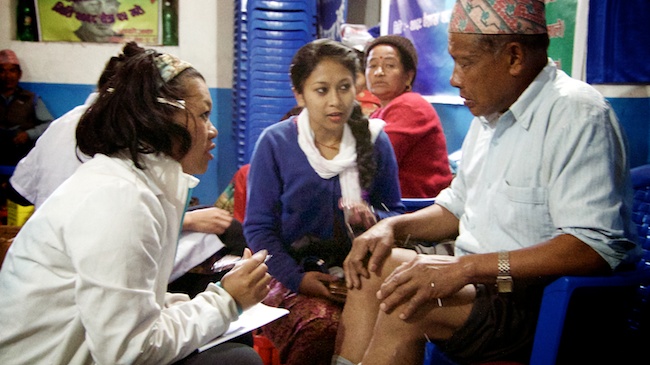
First of all, I've always dreamed of working in a small rural community. Our clinic is small and simple with three practitioners, three interpreters and always twelve patients rotating in and out. The room always seems small and dark when we first enter but we set out the blue plastic chairs and the bright quilted cushions and once the room fills with its first round of patients, there is a vibrancy in there that I love. Days are long and we work hard but we always have moments of laughter with the interpreters and the patients and these interactions and relationships are as much part of our medicine as the needles and the herbs. On days when patients bring us some of the many vegetables and fruit that they grow in their fields at home to thank us, I would walk home with the goods in hand and think about how I've always dreamed about being this exact kind of practitioner.
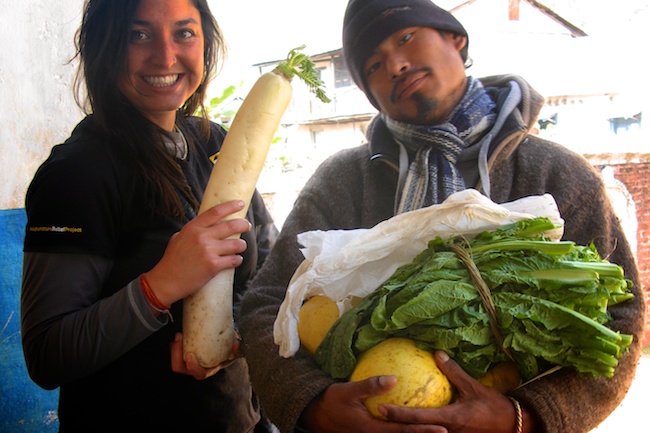
Secondly, Nepali people are amazing! They are all so kind and welcoming and every Nepali person I have ever met here has an amazing voice and know the words to every Nepali folk song. Dinner time and bus rides can break into spontaneous songs at any moment and you never know when it's going to happen- it's incredibly lovely. Our interpreters are all amazing and bright people and they work very hard with us, but they also know how to party hard. Christmas and New Years here have been the best that I can remember because both times we ended up with some spontaneous cake fights followed by some serious dancing. Both times, more cake ended up on us than in us ---in fact, I can only recall getting one bite in before someone smeared frosting on my face and by the end of it all the entire cake was gone.
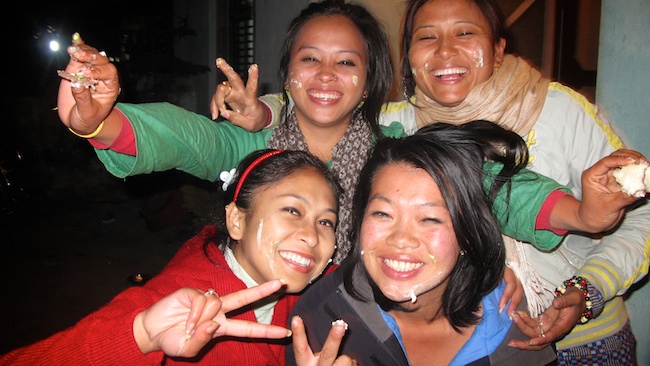
Finally, because the community and the people are so amazing, I have really enjoyed the experience of growing with them as people and as a community and also helping them grow by educating them about health and healthcare. The interpreters have regular training sessions with us and learn from us everyday in and out of clinic (as we learn from them too). And as much as possible we try to educate our patients about their conditions, about their health, and about health in general while simultaneously learning from them in the treatment process. I think that the education and connection are the most important legacies we are leaving behind even if there is no clinic tomorrow.
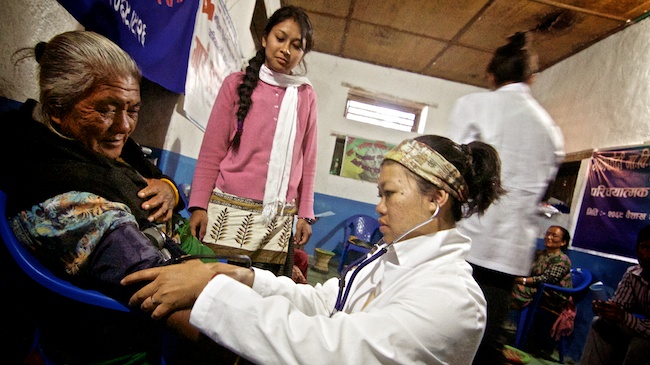
These are only drops in a bucket of moments that I can talk about. The connection and relationships formed with the community IS healthcare, and it is what I have been lucky enough to experience through Nepal. --- Phonexay Simon
- Details
- By Andrew Schlabach
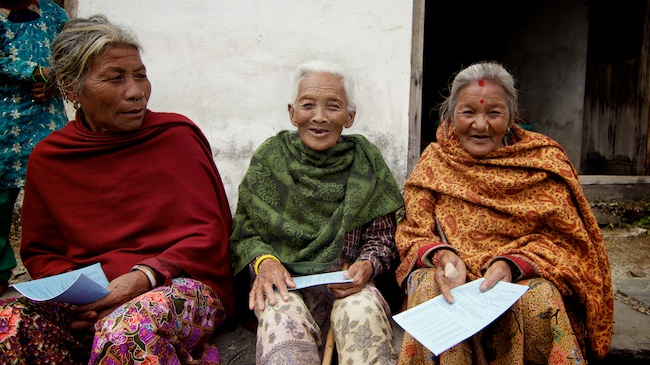
One brisk afternoon in a remote village in the Southern district of Makawanpur, Nepal several men and women, bundled in many layers of brightly colored wool clothing, sat in the sun waiting for their turn to see the “Doctor”. Many of them had never been to see a medical provider their entire life. Now, in their small village of Kogate, our team of practitioners moved their chairs out into the small courtyard in front of the rustic clinic building, as it was too cold to treat indoors. Some of the villagers waited many hours for their turn to tell the doctor about their pain, injury, or other health concern. Around the low stone wall that surrounds the courtyard, a dozen children and adults watched their friends and neighbors being treated. How strange this must have looked as our practitioners inserted several small needles into their patient’s bodies. A constant chatter filled the air as the villagers discussed the scene and asked their friends if the needles hurt. “Dhukdaina” they replied. “It doesn’t hurt”.
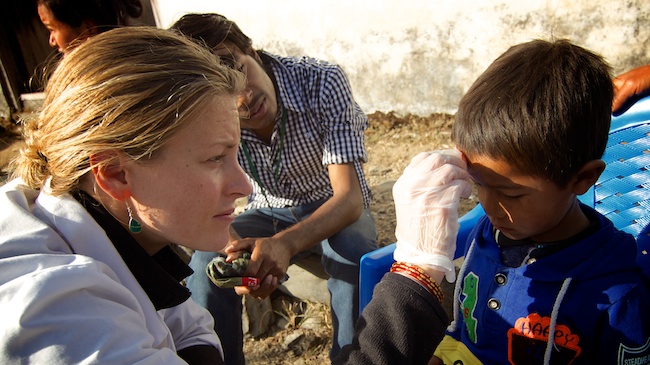
Sometime in the mid-afternoon a small boy of about 8 years was ushered into the clinic with a gaping head wound. Blood poured from a two-inch gash and his skull was clearly visible in the opening. The practitioners quickly assessed the boy for a concussion and interviewed the clearly shaken mother about the cause of the injury. It was determined that the family did not have the resources to transport the boy to the regional hospital, which was nearly 3 hours by way of a very expensive, four-wheel drive, ambulance ride. The team advised the mother about what they could do and what care would be required in the following days. They then proceeded to carefully clean the wound. A topical anesthetic (Lydocaine) was applied to help numb the area as damaged skin was clipped away with a scalpel and scissors. Finally the wound was closed with a medical-grade super glue and suturing tape. The boy was given a mild dose of Tylenol to help with the pain and some herbal antibiotic (clear toxic heat) tablets to help reduce the chance of infection. The mother was given a cup of tea while the practitioners did their work. After the procedure was finished the team educated the mother on how to look for signs of a concussion or infection. She agreed to bring the boy back the following day (even though it was a several hour walk to the clinic) or sooner if the boy took a turn for the worse. They agreed upon a contingency plan to administer Dicloxacillin (an antibiotic drug) if the boy exhibited a fever or other signs of an infection.
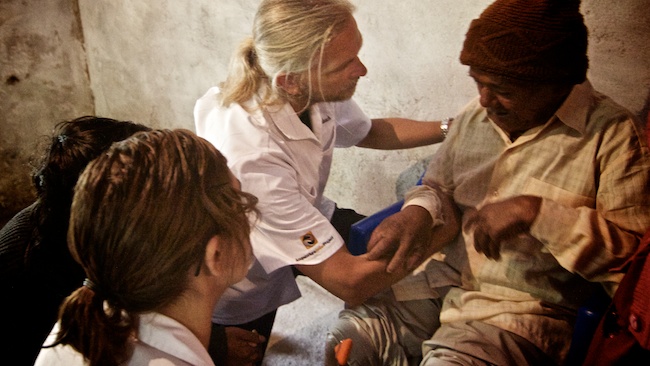
This kind of visit to our clinic is not at all unusual but may seem atypical to an “Acupuncture Clinic”. In fact, much of our clinic practice does not involve acupuncture at all. Our teams have assisted with child birth, responded to mid-night emergencies, diagnosed cases of cancer, parasitic infection and diabetes, and reported suspected cases of polio to the World Healthcare Organization. We see our clinic as new model in the delivery of primary healthcare in rural and developing regions. In this model we utilize what we call the “best care available” rule in our treatment planning. We pride ourselves on our expert diagnostic and evaluation skills which help us determine our plan. We start by asking ourselves “What is the best care for this condition?”, “Is that care available to this patient?” and “How do we help our patient’s access that care?”. Many times we conclude that acupuncture is the “best care” available because it is effective in treating many conditions, especially pain and other inflammatory pathologies. Acupuncture is also very inexpensive, safe with very few side effects, and easy to teach to other healthcare workers. Chinese herbal medicine, local Ayurvedic herbs, and naturopathic supplementation are also employed wherever they are deemed effective--and they are very effective when used properly. In addition, we are authorized and provided 40 listed allopathic drugs by the District Health Office. We use this pharmacology sparingly and wisely. For some of our patients, who have the means to travel to a regional heath post, we order labs and imaging (x-rays, ultrasounds, MRIs and CT scans). Many times we refer patients to specialists (surgeons, neurologists, gynecologist, etc). We partner with the local government and attempt to guide patient care though accurate reporting, good referral procedures and followup. Educating patients and healthcare workers is sometimes more important than all of our treatment modalities combined. Soap, water, and general hygiene become one of the most effective antibiotics. In Nepal, pharmaceutical antibiotics are commonly over-prescribed. This results in resistant strains of bacteria, allergic reactions and a general weakening of the patient’s digestive system. There is no counting the number of patients we have seen with damaged hearing due to uncontrolled chronic ear infections. Many of these patients have been given Amoxicillin irregularly for 10 or more years. The result is very hard to kill infections and irreparable damage to the tympanic membrane and middle ear structures. This affects many young people in Nepal and is completely preventable with better training and patient management.
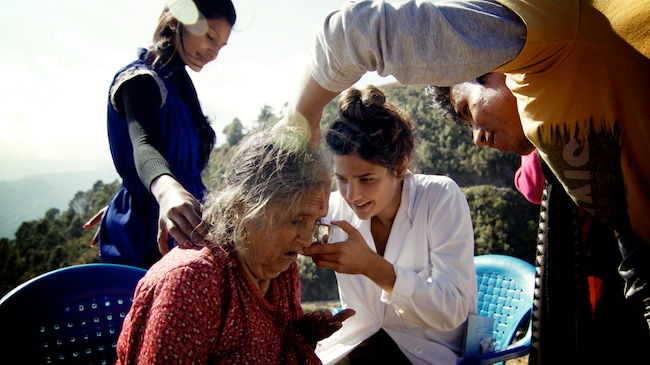
This year, the Acupuncture Relief Project undertook a courageous challenge of opening three experimental clinics in the remote regions of Bhimphedi, Kogate and Ipa, all villages in the District of Makawanpur. For the first time since we began working in Nepal (2008), we achieved a full partnership with the local government. Operating under the Nepal Social Welfare Council in cooperation with the Makawanpur District Health Office, we are now subject to the necessary oversight, inspection and reporting requirements of other governmental and private healthcare institutions. While this adds some level of expense, bureaucracy and complexity to our operation, it also allows us a new level of authority and access to government assets such as facilities and medications.
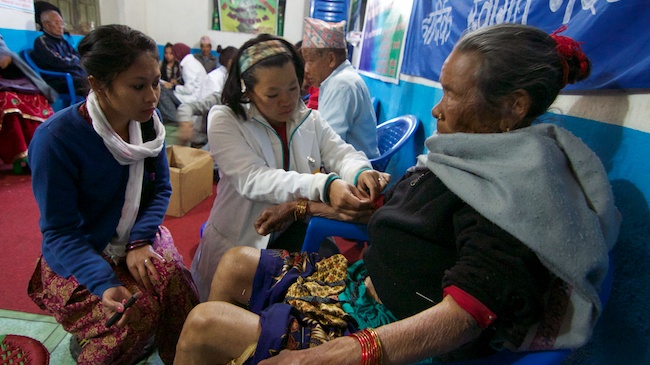
In our first three months here, we provided over 7000 primary care visits. Our volunteer practitioners work 6 days per week and they tackle some of the most difficult medical cases found in any modern hospital. Tuberculosis, diabetes, stroke, domestic violence, alcohol abuse, and seizures are common to our treatment rooms. Many times the “best care available” is the “only care available”... and that would be us.
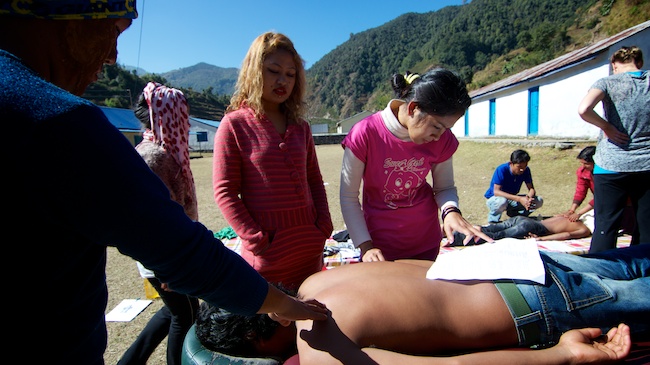
Since we were attempting to operate in a new region, it was necessary to select and train several new language interpreters. We began by advertising for English speaking locals three months before opening our new clinic. We interviewed many and finally invited 15 students for training. There is so much more to being an effective medical interpreter than just speaking English and we looked for students who not only possessed good language skill but also demonstrated empathy, sensitivity and a profound interest in their communities. At the end of our initial three-week training session, we offered employment to eight. Our new crew of interpreters, aged 18 to 24, had never met a foreigner or spoken to a native English speaker. What they lacked in confidence, they made up with in determination. Each week on their day off they attended classes taught by our volunteers. Classes included medical terminology, anatomy and physiology, safe clinical procedures, Chinese medical theory, concepts of therapeutic relationships, diet, and exercise. They also learned some basic auricular acupuncture protocols and massage techniques. All of this helped them become better at advocating for the information that practitioners needed to make a proper assessment.
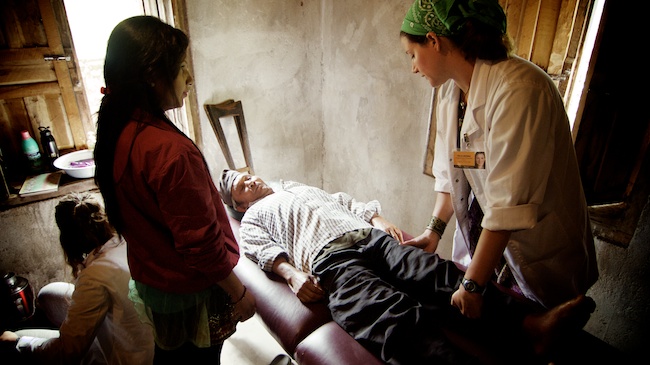
Our interpreters are crucial to our success in the clinic. When starting in a new village, it is imperative that we gain the trust of the community and the skill our our interpreters enables us to make that critical personal connection to each of our patients. This is no easy task. Our practitioners and interpreters work side-by-side all day, everyday, slowly perfecting each others rhythm, emotion and syntax until they seamlessly work as one. Once this happens, it is a magical experience for the both patient and practitioner. People start to get better.
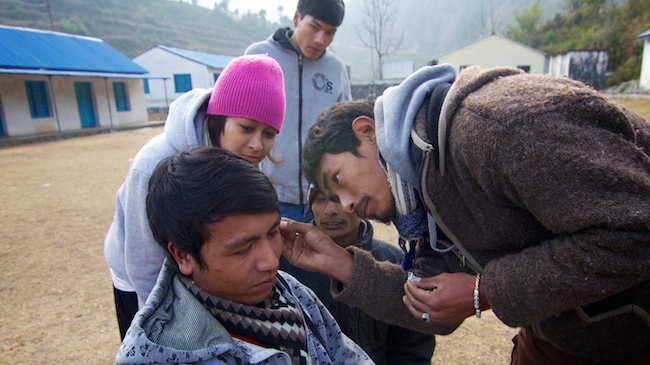
One of the things I find the most interesting in working with the interpreters is that they experience a truly unique perspective on what it is that we do here. They are not familiar with our medicine... or any medicine for that matter. They are interested in what we do but they are more interested in what they are doing for the people of their communities. At a recent training meeting, I tasked our interpreters to list 10 ways they thought our clinic was helping the people of their village. I think every healthcare professional should take note, only one of their answers had anything to do with acupuncture or medicine at all. Their number one answer was... “laughter is good medicine”. When I asked them to explain this, they elaborated that no one in Nepal had ever experienced a doctor that laughed with them, or took the time to know anything about their life outside of their health complaint let alone explain a diagnosis, treatment plan or medication. The fact that everyone was treated exactly the same, with kindness and patience, regardless of their ethnic group, caste or socioeconomic status, was what our interpreters saw as our greatest contribution. They also commented that self-care, proper use of medication and dietary advice we offer empowers people to take better care of their own health. Can it really be that simple?
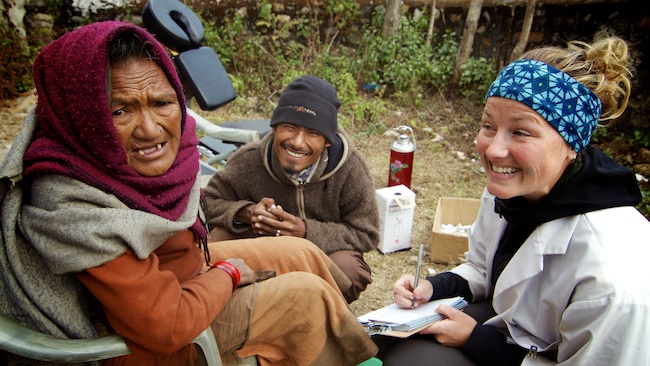
As this project strives to integrate so many modalities and medical concepts into a model of accessible, effective and ethical care, I am struck by the notion that there is really no such thing as alternative medicine. When people work together because they truly care about the wellbeing of others... this is medicine.
Author: Andrew Schlabach, MAcOM EAMP
Director, Acupuncture Relief Project
Kogate Clinic, Makawanpur, Nepal
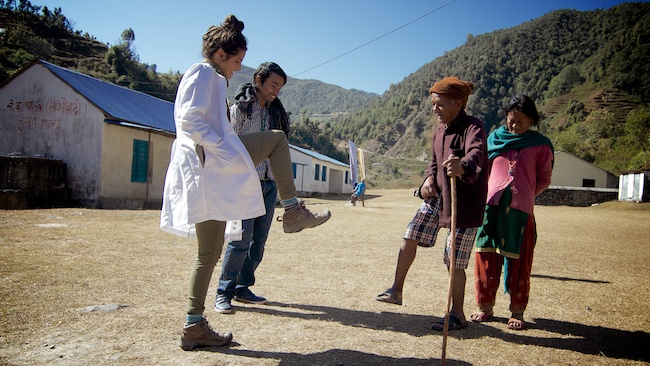
Our Mission
Acupuncture Relief Project, Inc. is a volunteer-based, 501(c)3 non-profit organization (Tax ID: 26-3335265). Our mission is to provide free medical support to those affected by poverty, conflict or disaster while offering an educationally meaningful experience to influence the professional development and personal growth of compassionate medical practitioners.
